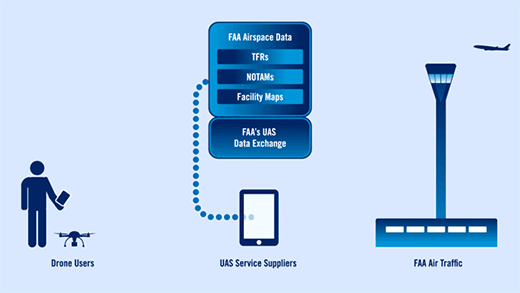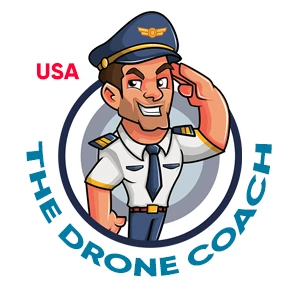
LAANC sUAS Low Altitude
Authorization Notification Capability
The LAANC sUAS Low Altitude Authorization Notification Capability system provides remote drone pilots with the ability to fly in controlled airspace. This low altitude authorization and notification system provides near-immediate automatic approval so remote pilots can operate an sUAS in controlled airspace at or below 400 feet. The FAA allows both recreational drone operators and certified commercial remote pilots to use the LAANC system.
Notably, LAANC is available to remote drone pilots operating under the Small UAS Rule Part 107 and remote drone pilots flying under the exception for Recreational Flyers.
For a nominal monthly fee, remote drone pilots can access the Low Altitude Authorization and Notification Capability system through one of the FAA Approved LAANC UAS Service Suppliers. We provided a list of providers below that specifically provide both iOS and Android smartphone apps in addition to regular services.
LAANC sUAS Low Altitude Authorization Notification Capability
FAA-Approved LAANC UAS Service Suppliers
Airspace Link | Aloft | AstraUTM | AutoPylot | Avision | UASidekick | Wing
LAANC provides:
- Firstly, drone pilots with access to controlled airspace at or below 400 feet.
- Secondly, awareness of where pilots can and cannot fly.
- Thirdly, Air Traffic Professionals with visibility into where and when drones will operate.
Ultimately, the LAANC system is connected to over 700 airports nationwide which provides drone operators with near-immediate flight approval in hundreds of locations throughout America.
Options to use LAANC
- Submit a near real-time authorization request for operations under 400 feet in controlled airspace around airports (available to Part 107 Pilots and Recreational Flyers).
- Submit a “further coordination request” if needed to fly above the designated altitude ceiling specified in a UAS Facility Map, up to 400 feet. Conversely, a Further Coordination Request is only available to Part 107 certified remote drone pilots.
- Manually apply in advance of a flight, for approval that’s manually coordinated through the FAA. It’s recommended to apply up to 90 days in advance and this service is available to Part 107 certified remote pilots only.

Pass Part 107 with our commercial drone training. Free Preview!
Further Coordination Request
A Further Coordination Request is not an automated process. Further coordination requests require additional steps for approval. A safety justification may be optionally submitted by the Part 107 operator for the Air Traffic Management’s (ATM) consideration. The Safety Justification is a one-way transmittal from the Part 107 operator that is for use with further coordination requests only. Again, a Further Coordination request is available to Part 107 certified remote pilots only.
LAANC does not process Certificates of Authorization (COAs). COAs are processed exclusively in the FAADroneZone website (https://faadronezone-access.faa.gov/) in collaboration with the governing Regional Service Center. Any attempt by an remote pilot operator to submit mitigations or COAs through LAANC will not be accepted.
Temporary Flight Restrictions (TFRs)
A circumstance that might prevent a remote pilot from obtaining LAANC approval is a Temporary Flight Restriction. Temporary Flight Restrictions. These airspace restrictions are called Temporary Flight Restrictions (TFRs) and are communicated to pilots through Notices to Air Missions (NOTAMs). They restrict all aircraft including drones from operating in a certain area for a limited time.
However, there can be times when remote pilots forget to check a NOTAM before embarking on their flight. With that said, remote pilots should make checking NOTAMs a part of their preflight checklist prior to flight. Doing so will help streamline a remote pilot’s in-field workflow, and also possibly prevent a lot of embarrassment too. These two online resources can help remote pilots check for active NOTAMs.
https://notams.aim.faa.gov/notamSearch/
https://skyvector.com/
TFRs are typically issued for safety or security purposes such as, natural disasters such as wildfires and hurricanes, certain major sporting events, or emergency or national security situations.
Low Altitude Authorization and Notification Capability applications provided by the above-referenced FAA-approved companies can also provide remote pilots with TFRs.
